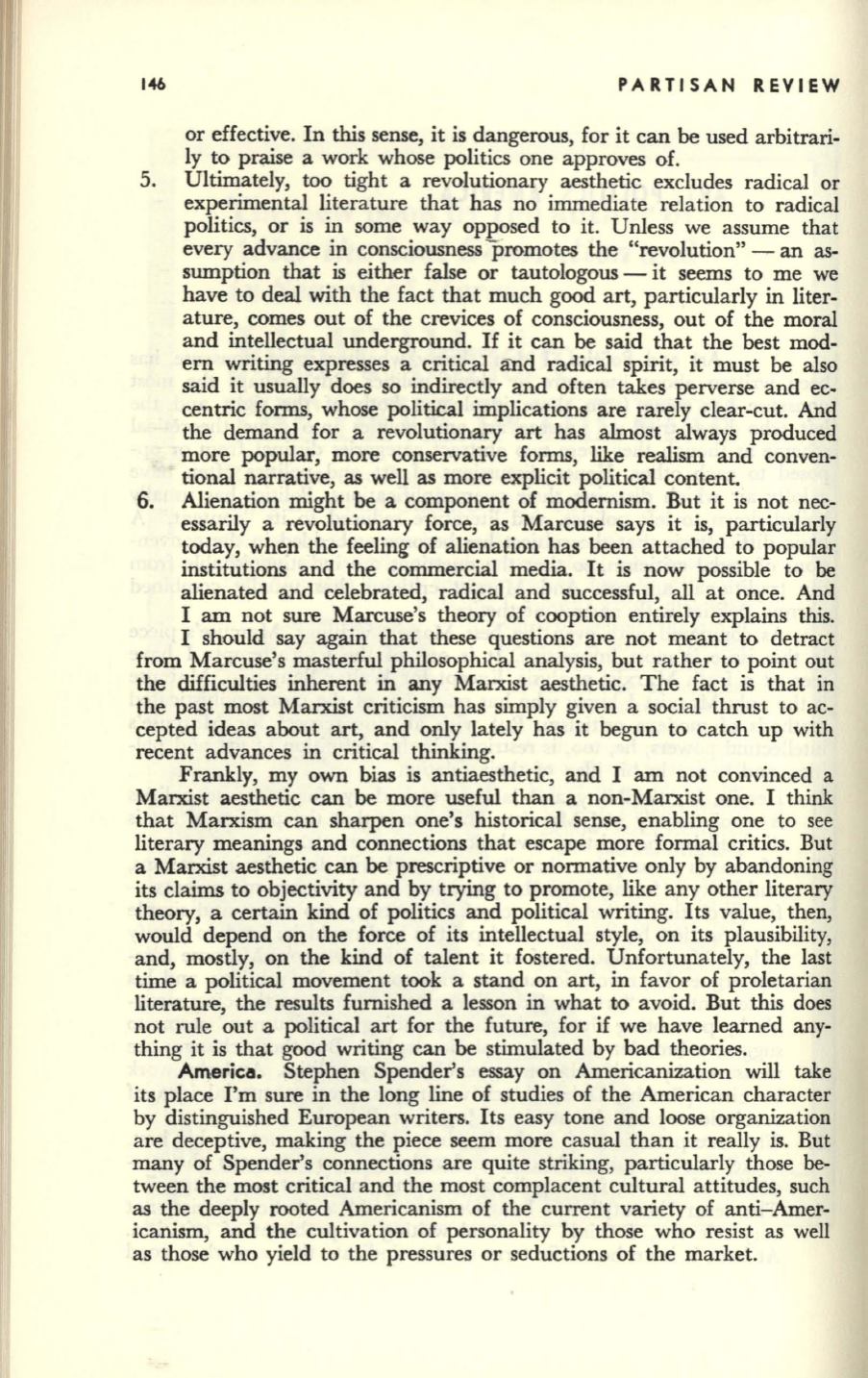
146
PARTISAN REVIEW
or effective. In this sense, it is dangerous, for it can be used arbitrari–
ly to praise a work whose politics one approves of.
5. Ultimately, too tight a revolutionary aesthetic excludes radical or
experimental literature that has no immediate relation to radical
politics, or is in some way opposed to it. Unless we assume that
every advance in consciousness promotes the "revolution" - an
as–
sumption that
is
either false or tautologous - it seems to me we
have to deal with the fact that much good art, particularly in liter–
ature, comes out of the crevices of consciousness, out of the moral
and intellectual underground.
If
it can be said that the best mod–
ern writing expresses a critical and radical spirit, it must be also
said it usually does so indirectly and often takes perverse and ec–
centric forms, whose political implications are rarely clear-cut. And
the demand for a revolutionary art has almost always produced
more popular, more conservative forms, like realism and conven–
tional narrative, as well as more explicit political content.
6. Alienation might be a component of modernism. But it is not nec–
essarily a revolutionary force, as Marcuse says it is, particularly
today, when the feeling of alienation has been attached to popular
institutions and the commercial media. It is now possible to
be
alienated and celebrated, radical and successful, all at once. And
I am not sure Marcuse's theory of cooption entirely explains this.
I should say again that these questions are not meant to detract
from Marcuse's masterful philosophical analysis, but rather to point out
the difficulties inherent in any Marxist aesthetic. The fact is that in
the past most Marxist criticism has simply given a social thrust to ac–
cepted ideas about art, and only lately has it begun to catch up with
recent advances in critical thinking.
Frankly, my own bias is antiaesthetic, and I am not convinced a
Marxist aesthetic can be more useful than a non-Marxist one. I think
that Marxism can sharpen one's historical sense, enabling one to see
literary meanings and connections that escape more formal critics. But
a Marxist aesthetic can be prescriptive or normative only by abandoning
its claims to objectivity and by trying to promote, like any other literary
theory, a certain kind of politics and political writing. Its value, then,
would depend on the force of its intellectual style, on its plausibility,
and, mostly, on the kind of talent it fostered. Unfortunately, the last
time a political movement took a stand on art, in favor of proletarian
literature, the results furnished a lesson in what to avoid. But this does
not rule out a political art for the future, for if we have learned any–
thing it is that good writing can be stimulated by bad theories.
America.
Stephen Spender's essay on Americanization will take
its place I'm sure in the long line of studies of the American character
by distinguished European writers. Its easy tone and loose organization
are deceptive, making the piece seem more casual than it really is. But
many of Spender's connections are quite striking, particularly those
be–
tween the most critical and the most complacent cultural attitudes, such
as the deeply rooted Americanism of the current variety of anti-Amer–
icanism, and the cultivation of personality by those who resist as well
as those who yield to the pressures or seductions of the market.


